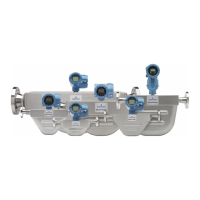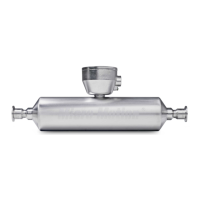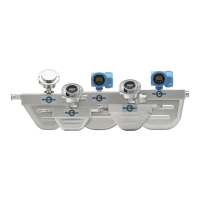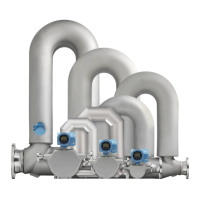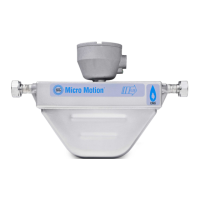ambient temperature is outside of the range permissible for the electronics, the
electronics must be remotely located where the ambient temperature is within the
permissible range, as indicated by the shaded areas of the temperature limit graphs.
• Temperature limits may be further restricted by hazardous area approvals. Refer to the
hazardous area approvals documentation shipped with the sensor or at
www.emerson.com/flowmeasurement.
• The extended-mount electronics option allows the sensor case to be insulated without
covering the transmitter, core processor, or junction box, but does not affect
temperature ratings. When insulating the sensor case at elevated process
temperatures above 140 °F (60.0 °C), ensure electronics are not enclosed in insulation
as this may lead to electronics failure.
Ambient and process temperature limits for standard-temperature models
The following chart shows ambient and process temperature limits for standard
temperature models using 316L stainless steel (S), nickel alloy C22 (H), and high pressure
(P).
140 (60)
–40 (–40)
81
(27)
–148 (–100)
–148
(–100)
400
(204)
140 (60)
A
B
B
T
amb
T
proc
T
amb
= Ambient temperature °F (°C)
T
proc
= Process temperature °F (°C)
A = All available electronic options
B = Remote mount electronics only
Ambient and process temperature limits for high-temperature models
The following chart shows ambient and process temperature limits for high temperature
models using 316L stainless steel (A) and nickel alloy C22 (B).
-40 (-40)
-148 (-100)
T
amb
T
proc
A
B
140 (60)
-40
(-40)
662
(350)
T
amb
= Ambient temperature °F (°C)
T
proc
= Process temperature °F (°C)
A = All available electronic options
B = Remote mount electronics only
Installation Manual
Planning
20002298 April 2020
Installation Manual 9

